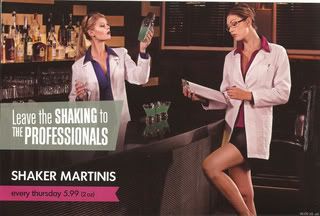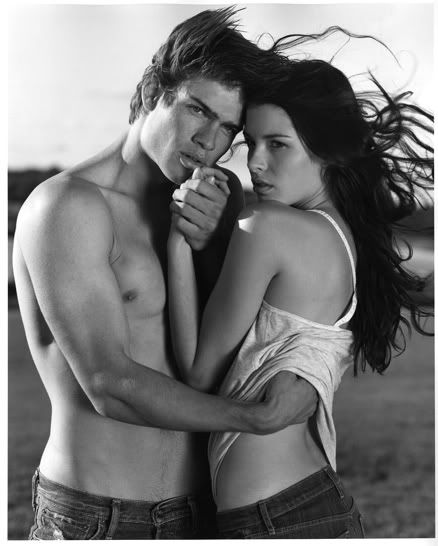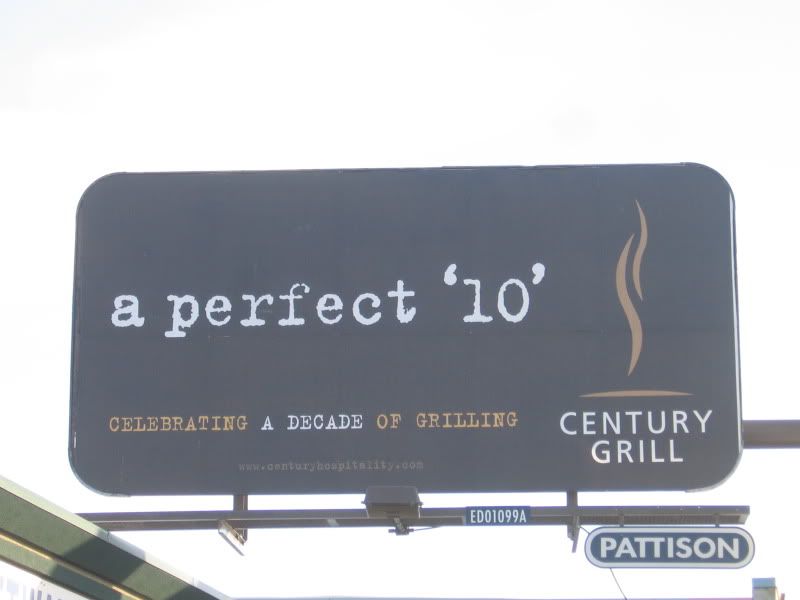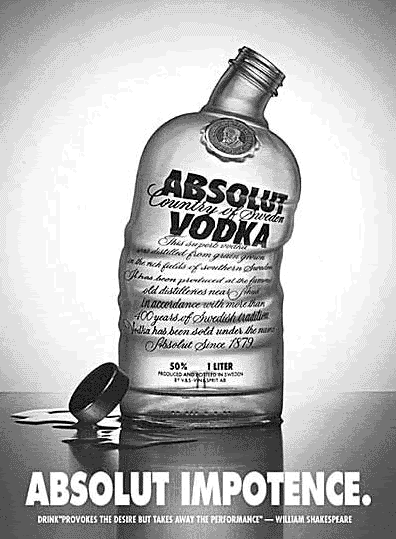The Burger King Ad is an ideal example of the sexualization of a commodity. Many fast food customers are irregular and fickle; choosing the restaurant that catches their eye with a low price or novel idea. The meaning as Pierce discussed assumes that the tag line, 'It will blow your mind away' will strengthen the connection and meaning for future customers between the text and image. The producers aspire to instill this sexual connection, and its deeper meanings etched in our minds for a future quick meal. (p.32) As Sturken and Cartwright make very clear that “We are trained to read for cultural codes... that signify gendered, racial, or class-specific meanings”. (p. 27)
Abercrombie and Fitch is notorious for its use of sexually charged images to seize the eye of both critics and anxious customers throughout their advertising. This image features an attractive white young male with his hand on the side of an equally idealized female, whose presence merely supports the male. “Men are being depicted as both masculine and objects of the gaze... almost passive” ( p.134) this change in model position and role is evident throughout many Abercrombie and Fitch ad. The defining feature of this advertising technique is that their clothing is minimal and secondary to the primary selling of a culture, and ideal through the sexualization of a high end clothing brand. The ability of this company to interpellate viewers longing to identify with the couple portrayed in this ad instantly see themselves as lacking their product and lifestyle which it represents. Sturken and Cartwright clarify this as the ability of advertisers to succeed in “Interpellat[ing] the viewer with an idealized future self”. (p.50)
The notion of negotiating meanings in the evaluation of advertising is essential as producers continue to rely on sexual innuendos to grab and keep our attention. The intent behind this perfume as is painfully obvious as the bottle is situated between a model’s breasts. The red nails and lips draw in the viewers gaze and portray an idealized woman. The image which aims to sell perfume is so sexually charged that the product is secondary to the desire to being in the position of the hypothetical viewer.
Wonderbra succeeds in utilizing many of the cultural ideals and stereotypes in the creation of a provocative ad. As a company that produces a product tailored to females it is fascinating that this company takes a leap in questioning a morphing assumption and attempting to identify with a new ideal created by the media and current idols. Sturken and Cartwright reaffirm this strategy by commenting, “The category of feminine is marked and understood as that which is not masculine” (p.111). This image relies heavily on the interplay between the text and image; as the model appears to achieve the same goal through sexuality which once demanded characteristically feminine roles. This ad manages to succeed in portraying a body which is “perfect yet somehow attainable” (p. 275), which is critical in the identification with the consumer.
The Canadian Brewhouse has incorporated the sexualization of their food throughout their advertising and menu. The Billboard that reads, “Try the BEST BALLS in town,” relies on common knowledge and appeals to a social class through humor. The combination of a cheap price and catchy line is optimal in this Edmonton Company’s campaign. It not only grabs the viewer’s attention but also gives them a reason to choose their restaurant when the price is compared to competitors. Once inside the menu featured catchy burger titles and menu items to sway the patron. From Pamela Anderson’s breasts to a french-fry threesome the producers had a strong focus on the sexualization of their commodity. The Canadian Brewhouse has succeeded in reaching a target audience through the exploitation of common knowledge and ‘idols’ linked to Canada to create a sense of patriotism and familiarity. Sturken and Cartwright note that advertising may “sell belonging (to a family...nation), attaching concepts of the nation, community, and democracy to products.” (p.277)
Century Grill along with the rest of the Century Hospitality group have been storming the advertisement industry in Edmonton over the last few years. In this Billboard off of Calgary Trail, we are using the denotive meaning of ten to mean the celebration of the tenth anniversary, yet the connotative meaning tells us that this ten is referring to a scale, usually used in judging the attractiveness of another person. With this rating Century Grill is effectively telling us that they (as well as their staff) are at the upper echelon of this rating scale.
The association between cars and sex has traditionally been thought of as a defining
element...[it] has not been nearly so strong as the one between sex and liquor. (Paul
Messaris, 1997 p.250)
Sex has been a very effective advertising technique over the last few decades. In the past the focus was mostly on the male, using women as objects to sell products, but now as we can see from ads like those of Abercrombie and Fitch, as well as the other clothing ads in the movie, we are slowly moving towards equal representation of gender as a tool to sexualize commodities.
References:
Chittenden, Tara (2009) For whose eyes only? The gatekeeping of sexual images in the field of teen sexuality. London, Uk: The Law Society.
Gill, Rosalind (2009). Beyond the `Sexualization of Culture' Thesis: An Intersectional Analysis of `Sixpacks',`Midriffs' and `Hot Lesbians' in Advertising.
Sage Publications
Sturken, Marita & Cartwright, Lisa (2009). Practices of looking, An Introduction to Visual Culture,
New York: Oxford University
Vohs, Kathleen, Sengupta, Jaideep, Dahl, Darren (2009). Sex in advertising: Gender Differences and the Role of Relationship Commitment.
Journal of Consumer research- Vol.36. August 2009












No comments:
Post a Comment